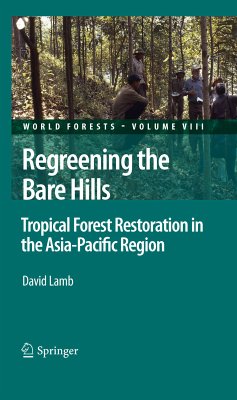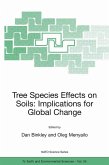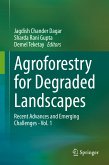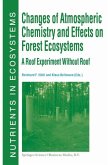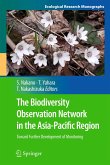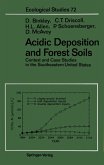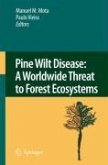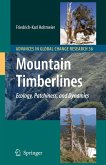Describing new approaches to the reforestation of degraded lands in the Asia-Pacific tropics, the book reviews current approaches to reforestation throughout the region, paying particular attention to those which incorporate native species - including in multi-species plantations. It presents case studies from across the Asia-Pacific region and discusses how the silvicultural methods needed to manage these 'new' plantations will differ from conventional methods. It also explores how reforestation might be made more attractive to smallholders and how trade-offs between production and conservation are most easily made at a landscape scale. The book concludes with a discussion of how future forest restoration may be affected by some current ecological and socio-economic trends now underway.
The book represents a valuable resource for reforestation managers and policy makers wishing to promote these new silvicultural approaches, as well as for conservationists, development experts and researchers with an interest in forest restoration. Combining a theoretical-research perspective with practical aspects of restoration, the book will be equally valuable to practitioners and academics, while the lessons drawn from these discussions will have relevance elsewhere throughout the tropics.
Dieser Download kann aus rechtlichen Gründen nur mit Rechnungsadresse in A, B, BG, CY, CZ, D, DK, EW, E, FIN, F, GR, HR, H, IRL, I, LT, L, LR, M, NL, PL, P, R, S, SLO, SK ausgeliefert werden.
"David Lamb's book is welcome because it examines the issues of reforestation and afforestation from an ecosystem perspective ... . The text is generously supported by case studies and ... it contains much that will be interest to those involved in forest conservation and management throughout the tropics. ... This book is the best in its class by far and should be available to all persons in forest and natural resource agencies as well as in the NGOs who often invest in tree planting." (Jeffrey Sayer, Tropical Conservation Science, Vol. 4 (1), 2011)
"The central theme of linking the restoration method to ecology and ecosystem services continues, again supported by case studies. ... This book is an absolute gem for anyone involved in forest restoration, it is well written ... . This is a researcher's book ... any research laboratory involved in ecological restoration generally, and on tropical forests (in particular) will find this book should be kept readily to hand." (Rob Marrs, Biological Conservation, 2011)
"In his new book, David Lamb presents a way out of this unfortunate cycle of deforestation, degradation, and devastation. ... Lamb has written the definitive work on tropical forest restoration, with relevance well beyond the Asian-Pacific region. This book is clearly written, superbly organized, and amply illustrated. ... this book will reach many readers and will spark the transformations so desperately needed in the world's tropics." (Robin L. Chazdon, Biotropica, Vol. 43 (6), 2011)
"In this book, David Lamb explores a fresh, holistic approach to tropical forest restoration. ... an invaluable source of wisdom for researches, policy makers, NGOs and the people whom they must help. ... it accessible to a very wide range of readers. ... it can be used as a reference, as it has a good index and it is packed with useful information referenced to source publications. ... If you can onlyafford to buy one book on tropical forest restoration, then this is it." (David Gillieson, Ecological Management & Restoration, Vol. 12 (3), December, 2011)
"This book provided a thorough introduction to reforestation in the Asia-Pacific region. ... its audience to broadly include national and international conservation entities, advanced students and researchers, business professionals, non-governmental organizations, and the media. We agree that Regreening would be a useful addition to the reference libraries of these groups ... . the book has a detailed table of contents and excellent cross-referencing making it relatively easy to find information on specific topics." (The CenTREAD Working Group, Human Ecology, November, 2011)
"The author achieves his aim of giving a comprehensive overview over the current state of smallholder and village forestry in APR and its contextual conditions ... . The rich personal experience of the author from fieldwork in APR and the abundance of interesting case studies add valuable information which otherwise would be difficult to access. ... the book is, as it is, thought provoking and a valuable source of data and information." (Eberhard F. Bruenig, International Forestry Review, Vol. 14 (1), 2012)
"This book is compulsive and compulsory reading for those of us that want to re-establish forest communities on degraded grasslands and degraded secondary forests in South-East Asia and the Pacific Islands. ... The text is well-written and easily read with relevant background, numerous case studies, key data and findings, well-compiled tables and text boxes ... . In summary, this is a highly readable, thoroughly well-researched and comprehensive book which is must-read material for all forest rehabilitation practitioners, including plantation managers, academics and students." (Lex Thomson, Australian Forestry, Vol. 75 (2), 2012)
"The book is exceedingly well structured and written andprovides a well-balanced treatment of forest restoration from both the ecological and economic perspectives. It is, at present, the most definitive treatment of tropical forest restoration on the market and as such it should be on the bookshelves of all tropical ecology lecturers and students, as well as NGO's and forestry departments. It should be treated as an invaluable investment by all those involved in protected areas management and REDD+ projects throughout the region and beyond." (Stephen Elliott, Natural History Bulletin of the Siam Society, Vol. 58, 2012)

